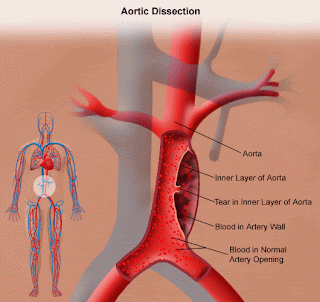Now-- try not to bite your nails as you read an excerpt from Dale's novel....
What is in a zombie virus? This is not something from a supernatural realm. We are talking about a living organism that changes what we know about human anatomy. In the series, “The Walking Dead”, the zombie virus killed the host, and then reactivated a portion of the brain. While I use that template, I take it one step further.
Here is an excerpt from the first draft of Smell of the Dead:
Topher tried to wipe the blood off then Davis stood up fast. Too fast for someone who was in perfect health, way too fast for someone who is sick. He staggered a little as the coughing started to go down. He stood clutching his stomach. He removed his goggles then Topher saw his eyes. Davis had brown eyes before, but now the iris was black with the pupil pearl white. The sclera was reddish white, as if he had been doing some kid of super drug.
He looked bewildered. He twitched his head about taking in his surroundings. Reddish black blood trickled from his mouth. The smell was atrocious. Topher… confused slowly backed up. Davis sniffed at the air, and then sharply turned his head towards Topher. He looked at his old friend like he was the last meal on the planet. Davis’s lips twitched like an animal ready to devour.
 |
| pilotkid100 |
Topher tried to jog from Davis but couldn’t get much speed up. Davis breathed hard as he charged towards Topher. Davis grabbed Topher and shoved him down on the ground, biting at his neck. Davis could only clamp his mouth on cloth from the coat.
Throwing the best jabs he could, Topher fought against his friend. With no air in his lungs to cry out, he kept trying to get his friend off of him.
Finally he got a hold of the knife he used earlier. He rammed the knife into Davis’s kidney, but he didn’t budge. Stabbing him over and over, Topher was still on the bottom of a violent attack.
Topher got his arm around to in front of him and thrusted the blade into Davis’s eye socket.
Davis let out a groan losing his bearings Topher pushed him off then grabbed a small shovel from his pack. He slammed it into Davis’ face, knocking him down. As he tried to get back up, Topher continued to hit him with the shovel.
Then Topher started coughing this time. It was enough that it made him double over wrenching in pain. A tiny bit of blood spat up with some of the fibers that he had seen in the blood from Davis.
His mind went fuzzy then became clear, like surreal a dream. Forcing himself to continue on, Topher retrieved a rope from his pack and tied up Davis. Red and black fibers perturbed from Davis’ face, with cloudy blackish circles of swollen skin. Davis got back up to his feet after the final knot was tightened. Ramming shoulder first into Topher’s chest, he ran like a Cheetah through the snow packed rocky path
.
Davis was a madman.
Uncontrollable.
Topher couldn’t understand what the hell was wrong with his friend. One moment he was dead, the next some kind of monster from a Dean Koontz novel.
Davis jogged up the rocks towards the cave from which they came. Then he collapsed meeting the snow face first.
Topher wondered if Davis could get frostbite in this weather after what happened to him? At this point frostbite was the least of his worries. This was indeed a strange condition. And the fact that Dr. Michael Davis worked as a microbiologist with the CDC on the same project as Terry Marshal and Lefty Craven, the very project that forced the whole group to run, made him wonder how many of them had come in contact with the virus.
Ribs ached in pain, another cough tore its way though Topher’s lungs and pried his jaws open in a relentless rapidity of malevolent force.
With the onslaught bursting through his mouth and the hundred mile an hour wind that kicked up out of nowhere, Topher hit the ground embracing himself to keep his body from tearing itself apart.
Curled in the fetal position, covering the snow carpeted rocks inches from his mouth, Topher projected blood laced with the strange looking fibers. This was a little different then what Davis went through. There was, however, no mistaking the fact that the same virus infected him. The wind hammered his body as the chill swept down his spine. With his coat zipped up, his goggles covering his eyes, and wearing his gloves, Topher could still feel the frigid cold. The chill mixed with the sensation of hot pinpricks throughout his entire body.
Fibers penetrated his skin as his insides churned.
With the character Michael Davis, I start the story off with him sick. Has been sick for days. As he slowly turns into the undead, not only has he infected others, but the virus changes from subject to subject.
Davis works like a human laboratory. As it grows inside, terraforming his innards, the virus becomes stronger, and effects the host quicker once they are infected.
With the fibers of Morgellons Disease, they have now become a condition of the zombies. In Smell of the Dead, the zombies start out fast then slowly become slower as they deteriorate. But the trademark that will persist, are the fibers. They penetrate through the skin everywhere. They work like cactus spines that carry the infection.
The Lyme and MRSA are aliments of the turning.
Scientists in the real world are always tinkering with viruses, looking to combine them as either a weapon, or as a vaccine. There has even been talk of taking one type of bacteria and using it as a new kind of energy to power the world.
******************************************************************************
 Author Dale Eldon lives in a Macomb, Illinois, and takes care of a sick mother while working overnights at McDonald's. He spends his free time with loved ones and writing his butt off. Between blogging and writing anthology submission calls, he is currently working on a zombie trilogy for a series of novellas and a novel.
Author Dale Eldon lives in a Macomb, Illinois, and takes care of a sick mother while working overnights at McDonald's. He spends his free time with loved ones and writing his butt off. Between blogging and writing anthology submission calls, he is currently working on a zombie trilogy for a series of novellas and a novel.































